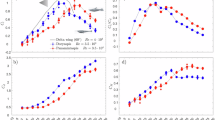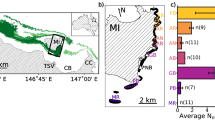Abstract
IT may not perhaps be generally realised that the common cuttlefish, Sepia officinalis, uses its siphon for slow swimming in all directions, as well as for the more violent backward leaps. We recently had an opportunity of watching the behaviour of cuttlefish which were swimming at eye level and above our heads in one of the large tanks of the Plymouth aquarium. We were rather surprised to notice that while moving slowly forwards with its fins undulating, the cuttlefish had its siphon curved back ventrally and was assisting its forward motion by emitting gentle squirts of water (Fig. 1, A). If the cuttle wished to turn to one side it would point its siphon opening to the opposite side and squirt a little more violently (Fig. 1, B). In fact, for all its general slow movements the siphon appeared to be used, the undulations of the fins merely keeping the motion continuous and preserving the balance. In the quick backwards swimming the fins were depressed along the side. The siphon was extended about an inch and a half and coxild be pointed in any direction.
This is a preview of subscription content, access via your institution
Access options
Subscribe to this journal
Receive 51 print issues and online access
$199.00 per year
only $3.90 per issue
Buy this article
- Purchase on SpringerLink
- Instant access to full article PDF
Prices may be subject to local taxes which are calculated during checkout
Similar content being viewed by others
Author information
Authors and Affiliations
Rights and permissions
About this article
Cite this article
RUSSELL, F., STEVEN, G. The Swimming of Cuttlefish. Nature 125, 893 (1930). https://doi.org/10.1038/125893a0
Issue date:
DOI: https://doi.org/10.1038/125893a0



